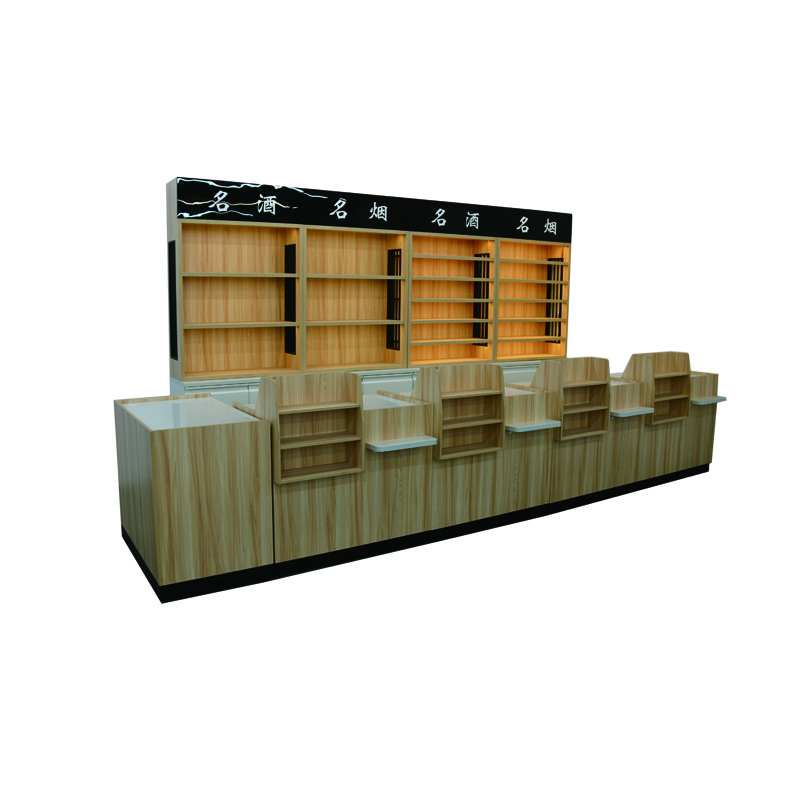
-
 National service hotline
National service hotline
- 400-082-1188
- What should be paid attention to when displaying goods on shelves in the bulk weighing area
- What are the applications of Zhongdao double-sided shelves in supermarkets
- What are the characteristics of steel and wood shelves
- What are the advantages of fresh food shelf
- Where are steel and wood shelves suitable for placement in supermarkets
What should be paid attention to in the maintenance of tobacco and liquor cabinets
source:www.juren.top | Release time:2024年12月31日1. Cleaning and hygiene
Cabinet surface: Tobacco and alcohol cabinets are often made of materials such as wood, glass, metal, etc. Wooden cabinets should be regularly wiped with a soft dry cloth to remove dust. If necessary, a mild wooden cleaner can be dipped in it. Avoid using rough cloths to prevent scratching the paint surface; The glass part can be quickly cleaned without leaving any water stains by wiping it in one direction with glass water and a clean soft cloth; Metal materials, especially stainless steel, should be cleaned with a neutral cleaner and a damp cloth, and then immediately wiped dry to avoid rusting.
Internal cleaning: Clean the inside of the liquor cabinet at regular intervals. Remove tobacco and alcohol, clean up any debris such as cigarette ash and paper scraps that have fallen inside, and wipe with a clean damp cloth to remove odors and stains, ensuring a clean internal environment and creating good conditions for storing goods.
2. Temperature and humidity control
Suitable temperature: the ideal temperature for the storage of cigarettes is 22-27 ℃, while wine is different according to the type. Wine is generally 12-18 ℃, and Baijiu is relatively broad, but should not be too high or too low. Therefore, it is necessary to install an air conditioning system in the store to correctly regulate the temperature based on the type of tobacco and alcohol sold, in order to avoid the deterioration of tobacco and alcohol caused by high temperatures in summer or the impact of cold winter on taste.
Humidity regulation: Cigarettes are prone to moisture and mold, with a suitable humidity range of 50% -65%; Wine storage requires a humidity of around 60% -70%. Dehumidifiers can be used to reduce humidity, while humidifiers can be used to increase humidity, ensuring stable environmental humidity and extending product shelf life.
3. Lighting maintenance
Check light bulbs: There are often lighting fixtures in tobacco and alcohol cabinets to highlight the display effect of products. Regularly check whether the light bulb is damaged or flickering. If such a situation occurs, replace it with a light bulb of the same specification in a timely manner to ensure even and bright lighting inside the cabinet and attract customers' attention.
Cleaning lighting fixtures: After prolonged use, dust may accumulate on the surface of the lampshade. Regularly remove the lampshade and wipe it with a clean soft cloth to remove dust and dirt, improving the light penetration and enhancing the display effect.
4. Insect and rodent prevention
Insect prevention measures: Place natural camphor balls, lavender sachets, and other insect repellent items in the corners of the cabinet to drive away cockroaches, beetles, and other pests; Insect proof nets can also be installed, especially at ventilation openings, to block flying insects from entering and prevent them from contaminating tobacco and alcohol.
Key points for rodent prevention: Check for any rat holes or gaps around the tobacco and alcohol cabinet, and promptly seal them; Mouse traps, sticky boards, and other rodent traps can be installed in the store to prevent mice from gnawing on tobacco and alcohol packaging and products.
5. Avoid collisions
Daily protection: Tobacco and alcohol cabinets are often placed in prominent locations in stores with high foot traffic. Employees and customers should be reminded to avoid them to prevent accidental collisions with the cabinets when handling items, which could damage the wooden, glass, or metal frames and affect their appearance and stability.
Be cautious when moving: If you need to move the tobacco and wine cabinet, first empty the internal goods, and multiple people should work together to lift or push it steadily, avoiding dragging or tilting, and preventing damage to the cabinet structure.
6. Regular inspection
Stable structure: Regularly inspect the overall structure of the tobacco and wine cabinet, check for loose screws and stable connections, and pay attention to any signs of cracking in the wooden cabinet. If any problems are found, repair and reinforce them in a timely manner to ensure safe use.
Sealing inspection: Check the sealing of cabinet doors and drawers. Good sealing can better maintain temperature and humidity, block dust and pests. If the sealing strip is found to be aged or damaged, it should be replaced as soon as possible.
Prev:
What are the structural characteristics of conven…
Next:
What products are mainly displayed on the shelves…

 Micro signal:
Micro signal:


 official account
official account
 applet
applet
 wechat
wechat
 contact
contact
 phone
phone